*There will be an open discussion of all that has happened from Episodes 1–8 of WandaVision. Spoiler Warning*
There are three types of people in this world: those that despise Marvel and all it represents (booo!), those that simply watch it and easily dispose of it if necessary (fine!), and then the addicts who wish they could inject Marvel content directly into their veins (yeah!). I am part of that last group as many friends, colleagues, and random strangers I bother on the street will attest. And part of the Marvel Cinematic Universe (MCU) fan culture is digging into the constantly evolving lore that is obsessively maintained and cultivated by everyone from the executives of Marvel Studios to the producers, writers, actors, and prop masters, but most specifically, Kevin Feige.
Marvel Studios’ president and Chief Creative Officer, Feige is perhaps the world’s luckiest Marvel superfan. His first producing credit, as associate producer, was on X-Men (2000). Before the concept of the MCU became a reality in 2008, Feige helped produce thirteen additional Marvel projects including the two Fantastic Four entries (which introduced him to future Captain America Chris Evans), Daredevil, Ang Lee’s Hulk, and The Punisher. Rich with encyclopedic knowledge and legitimate passion, Feige found himself the head honcho of what would become the industry-leading pop culture figurehead.
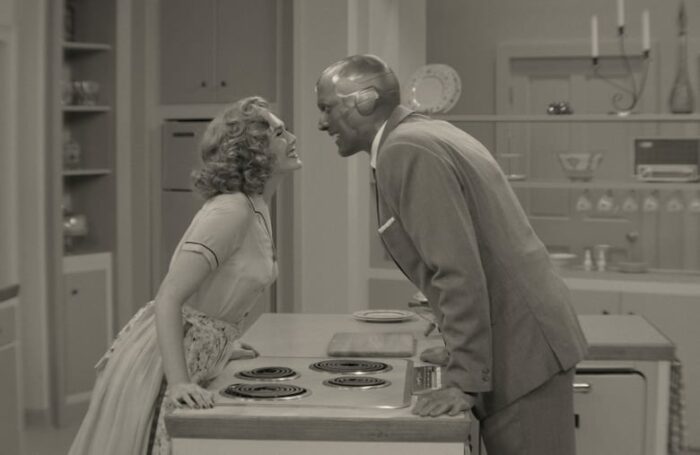
The key to the MCU’s cultural dominance is its specificity; to not only building its mythology but endlessly teasing what’s to come and lovingly reference what came before. As Hugh Jackman noted in an interview with MTV News, Feige’s office was “wall to wall comic books” and, since comics were banned on Bryan Singer’s X-Men set, Jackman would go to Feige to learn about the history of the character he was playing as if it were addicting “contraband.” Jackman continued, “nothing makes me happier to know that someone who is purely creative, purely a lover of the legacy of those comic books is this successful” adding that the concept of Hollywood being run by “suits” is immediately squashed by Feige’s existence.
Paul Bettany, co-star of Disney+ current smash hit WandaVision, confirms Feige’s legitimacy, stating in an interview with director Kevin Smith at Ace Comic-Con in 2018 that “when I came set first time dressed as Vision, Kevin Feige cried.” Echoing Jackman, Bettany explained the MCU films were “made for fans by fans” and that “there is something before financial remuneration that they are after and you can feel that on set.” So with someone like Feige at the helm, it shouldn’t surprise comic fans that the MCU is littered with what is now called Easter Eggs, or hidden visual and/or verbal references, to either Marvel’s comic book past or its cinematic future. While casual viewers can still enjoy the film without even recognizing such minutiae, attentive super fans can not only get loving references to the source material but can speculate endlessly for days, months, or even years about movies/shows to come.
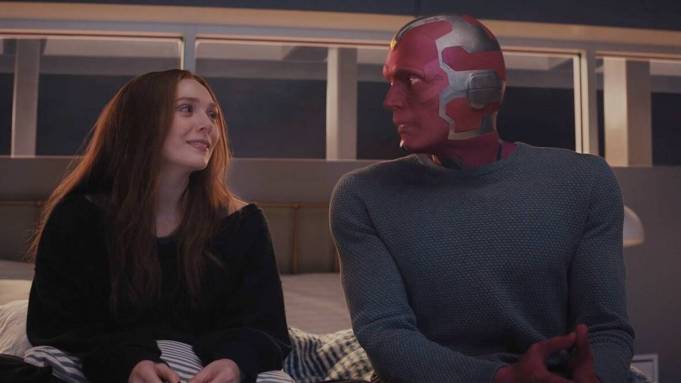
This Easter Egg culture is a creative industry in itself. And, at least until WandaVision, was certainly a fun and relatively harmless activity. In the lead up to Avengers: Endgame, for example, detailed scene by scene breakdown of the film’s limited trailers held fans in check who were dying to know what happened next while they toiled for an entire year waiting to see the conclusion to Thanos’ universe-breaking “snap” in Avengers: Infinity War. Not only were there trailer “reaction” videos but loads of videos looking at small text, conspicuous shadows, and even line delivery to try to guess what would or could happen. And once the film came out, you could find even more secrets “revealed” such as this half-hour-long video that promises 209 (!) Easter Eggs.
While this Easter Egg/speculation trend is not exclusive to Marvel, it is Feige’s dedication to packing the MCU with seemingly endless lore that keeps the lifeline of Marvel alive. If the fans stay hungry for months and years for “content” like Easter Egg videos then they certainly will not only see the main story play out on cinema/TV screens but also revisit prior entries in the canon to feel like even more of an insider. This Easter Egg culture also feeds on fandom’s desire to collect items, most specifically Funko Pops, statues, and T-shirts, to display their love and affection for the Marvel brand.
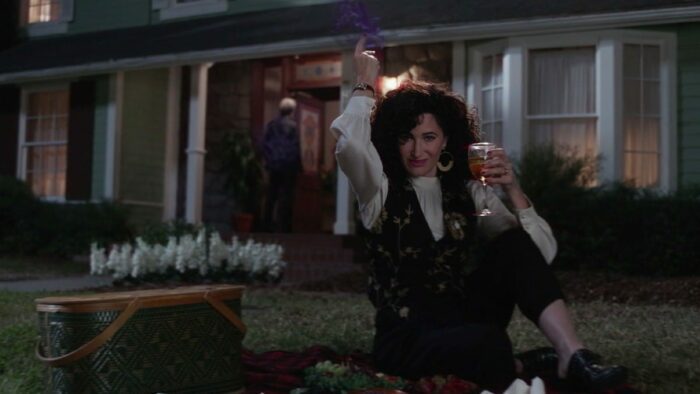
Like all other MCU properties since 2008, WandaVision is no different when it comes to this collector’s marketplace. In fact, to preserve spoilers from being released about the highly secretive and, frankly, unpredictable show, Marvel has released WandaVision Funko Pops in waves, teasing the reveal of additional Pops each week that has gone by during the show’s run. As we sit only a day away from the series’ finale, fans are anticipating still more Pops to be released that will not only highlight as-yet-unnamed Episode 9’s major events but conclude an entire television season’s worth of very specific, all-mythological, detail that, as of last week’s event, are constantly in flux.
On his most recent entry of the Fatman Beyond podcast, director Kevin Smith marveled (no pun intended) at Feige’s ability to not only bring comic book characters to life in general but to effortlessly forge the comic book reading experience with television:
“[…] because even the trope of retconning they’re bringing in to their work […] They are literally retconning the Marvel Cinematic Universe as we speak […] [retconning] is so much a part of the comic book history and reading experience that they’re not only giving us the highlights, the best of stories, mish-mashes […] that to me is capturing my imagination right now where I am this is the purest f*cking experience closest to reading comics as I’ve ever had in my entire life. They are nailing this sh*t.”
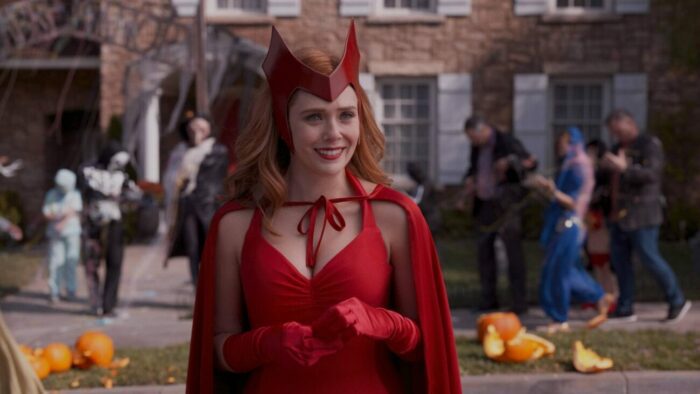
This kind of meticulous merging of narrative storytelling was likely Feige’s plan all along. After all, it is his love of the source material that has translated, slowly, over a decade, into the Cinematic Universe that shares locations, characters, and story arcs. But when it comes to WandaVision, this blurred line between fact and fiction in the core mythology as well as an incredible need to collect artifacts from the show itself has had an unexpected consequence: guilt.
The crux of WandaVision, as we’ve discovered through eight episodes so far, is that Wanda Maximoff (aka “The Scarlet Witch”, played by Elizabeth Olsen) has essentially had a mental breakdown after years of repeated personal loss, and is projecting her ideal life, one of a constantly revolving sitcom, whilst regenerating from nothingness her deceased lover Vision (Paul Bettany) to live it with her. This may be a crude simplification of all the going-ons but, in the end, WandaVision is, as show director Matt Shakman said “about grief, loss and how we come back from losing people we love’.
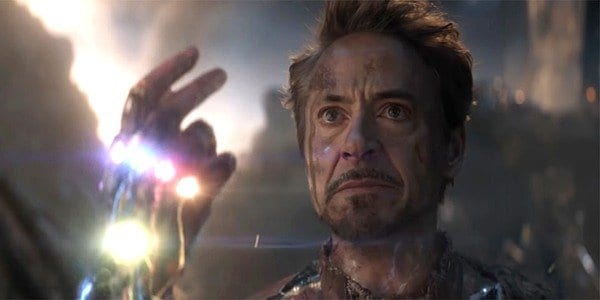
The reason guilt comes into the picture is because the very symbols of Wanda’s grief become fodder for collectors and lore-based observers. And that feels, well, kinda wrong. When Tony Stark sacrifices himself to literally save the universe in Avengers: Endgame for example, a Funko Pop glorifying his heroic sacrifice is kind of a noble tribute to said hero. Having Ant-Man Pops (of which I have many) serves as a fun reminder of the general good feeling the characters and movies of the Ant-Man section of the MCU franchise provide. The same goes for T-Shirts and figurines or, really, any other type of collectible.
This is turned on its head by the ever-changing tone of WandaVision from episode to episode. The series’ first two entries, “Filmed Before A Live Studio Audience” and “Don’t Touch That Dial” are virtually harmless homages to ’50s and ’60s sitcoms. The recreations of classic sets similar to The Dick Van Dyke Show and Bewitched are charming, the actor’s performances lovingly duplicate those of their acting ancestors, and the stakes are admittedly silly. As a result, viewers were just agog with how awesome this whole experiment was, yet to know the why of the scenario.
I, personally, along with fellow 25YL writer and Marvel bestie Rachel Stewart, was quick to grab as much merchandise as possible to celebrate the retro, fun feel. I purchased a number of WandaVision T-Shirts that amplified the ’50s aesthetic and, of course, bought Funko Pops showing Wanda and Vision in their ’50s garb. As I unboxed them and displayed them in my office, I felt a sense of joviality spring from me. What fun! And don’t even get me started on the endless replaying of the WandaVision theme songs on Spotify!
And the same fervor extended to taking shot by shot guided tours through the episode’s visuals thanks to the ever-growing Easter Egg watchdogs that permeate YouTube. They showed promising and cutesy callbacks to MCU in-jokes and potential “big bads” that could give Wanda and Vision, our cute little couple, some unwanted attention. In matching with the show’s early tone, any threat seemed inconsequential or, at most, annoying. This is a happy show full of homages and laughter. Sure, there is a mystery but… isn’t this all fun?
But as we soon discover in episodes like “Now in Color,” “Breaking the Fourth Wall,” and “Previously On,” these decade hopping sitcom environments are really an extensive, and possibly dangerous, coping mechanism for a woman on the psychological edge. Now, whether that means Wanda is projected to be the new “big bad” of the Marvel universe herself remains to be seen but, overall, the “fun” of seeing a desperate woman escape from her reality, taking others with her, including an unsuspecting public, feels almost like enabling poor behavior.
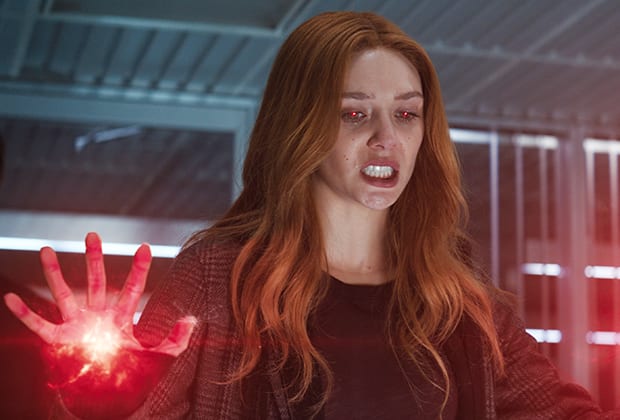
As a chronic sufferer of OCD and anxiety myself, escapism is one of the double-edged swords of reality. Yes, it provides a necessary release from the conflicting thoughts and catastrophization toiling inside but too much escapism can lead to avoidance, which is detrimental to growth and, most importantly, the ability to move on from a disturbing situation. Wanda is, as of this moment, not a bad person, just a sad one, and other forces may be behind some of her actions (it is very clear both Director Hayward and Agatha Harkness have some cards still to play).
But regardless, the show’s theme is one of grief and, perhaps, handling said grief poorly. And as literal iconography of Wanda’s mental trauma, the ’50s themed T-shirts seem less cute; the fun of capturing characters as vinyl figures in their moments of mass delusion seems less apparent; digging into an apparent cry for help in search of nerdy bonus features seems, at worst, intrusive and, at least, disrespectful. Branding Wanda’s psychological issues as if they are team logos on a hat screams the promotion, nay, the acceptance, of bad behavior.
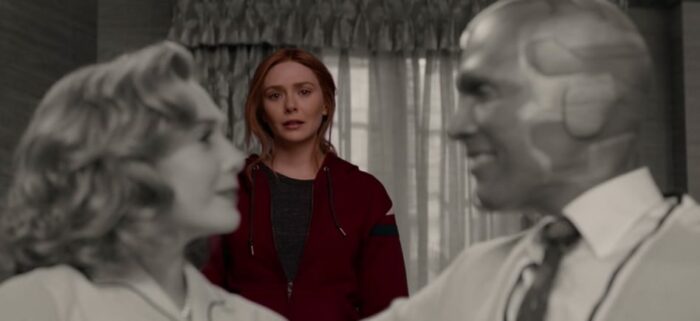
Now I’m not saying burn your T-shirts and give your Pops to Goodwill; this isn’t a cancel culture piece. I’m merely reporting that Kevin Feige’s brilliant machinations of the MCU, morphing narrative styles into one complex form and capturing the hearts and minds of almost every distinct quadrant, may have hit an unexpected speed bump on the road to that wonderful land of profiting from your art. By immortalizing pain in a physical form, some of us carry with us an item or two that might have been seen as fun and exciting but, in reality, represents something far more sinister.
Once again, these ideas are not exclusive to the MCU. Game of Thrones has an “adorable” Ramsey Bolton Pop, for example, and it is slightly problematic that a character whose main character traits are “rapist” and “murderer” would be celebrated so gleefully. And the same could be said for noted child murderer Freddy Kreuger, who appears on plenty of lunchboxes and fridge magnets in a geek’s home. Hell, remember when R-rated movies like Alien made toys exclusively for kids?
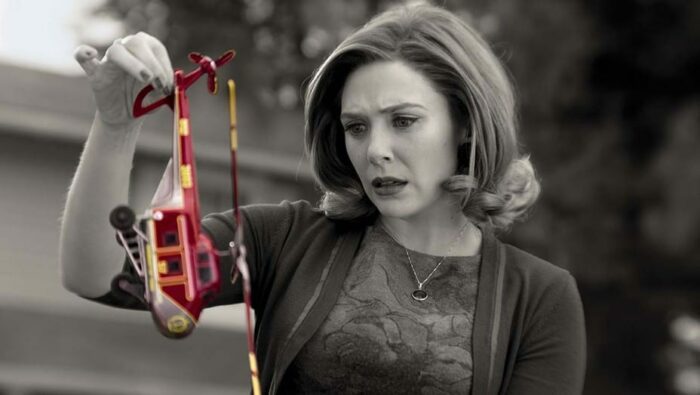
I suppose this all means: take it easy Will! Relax and enjoy the show. And I do, honestly. These last nine weeks have been some of the most fun I’ve had since, well, Avengers: Endgame. That said, Kevin Feige’s MCU dream, to make something so affecting and powerful that it is a prime mover of pop culture, has entered a new stage of evolution that is not only changing our concept of popular mythology but also the marketplace birthed from it. With a wider net of more relatable issues to present, the ephemera spawned by MCU projects can no longer simply be seen as disposable product but a valid, problematic, and complicated extension of the themes it promotes. Feige may have wanted to change the film industry but now he has changed both television and the worldview of fan culture.

